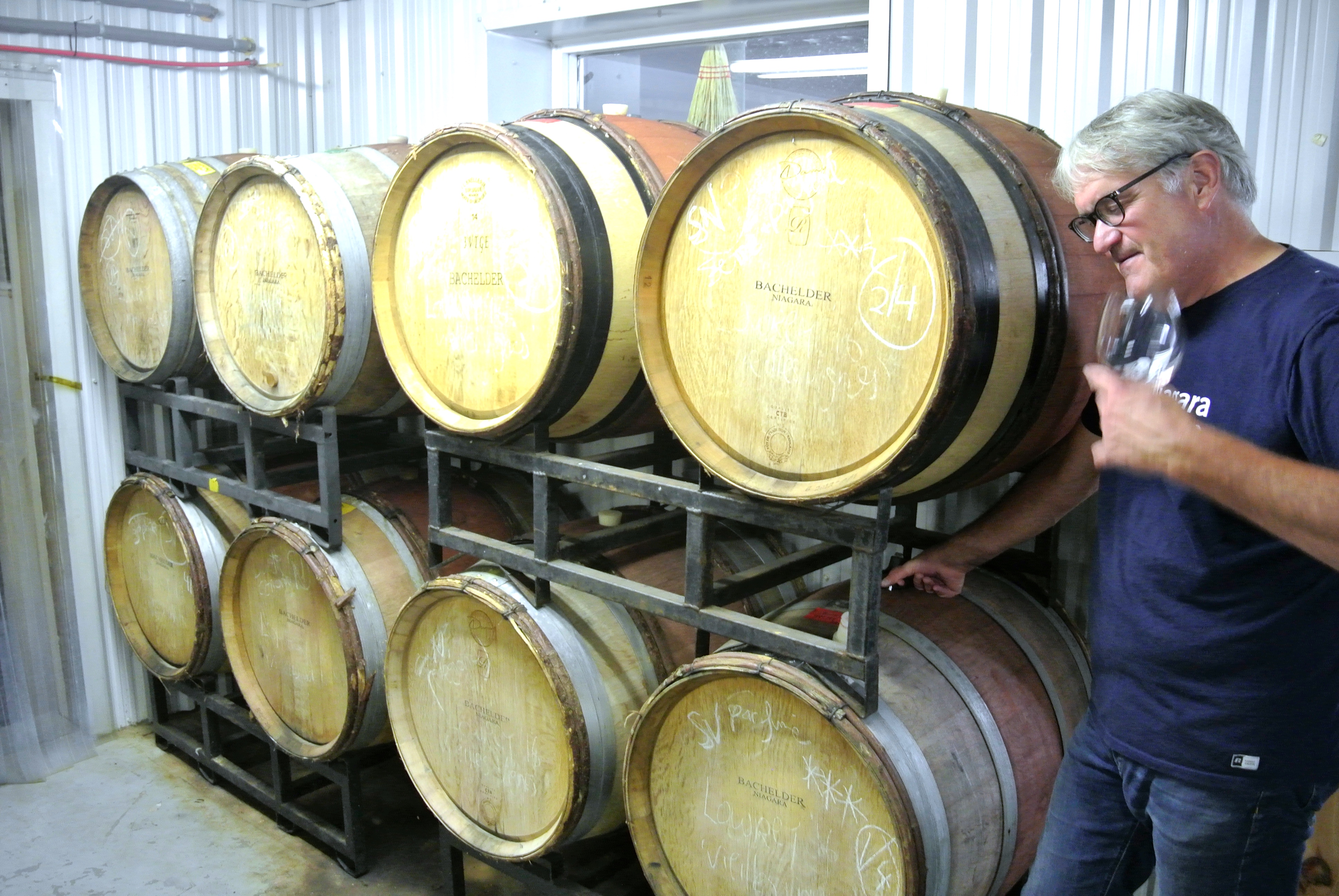
By Rick VanSickle
I’ve seen this routine before; it never gets old with Thomas Bachelder’s Niagara wine project.
Barrel 1/4 … ★★★ … SV … Parfumé … Lowrey 1984 … Vielles Vigne … and various scribbles half French and half English written on a barrelhead that refer not only to where the fruit comes from but also references the minerality quotient. It always comes down to the minerality for winemaker Thomas Bachelder.
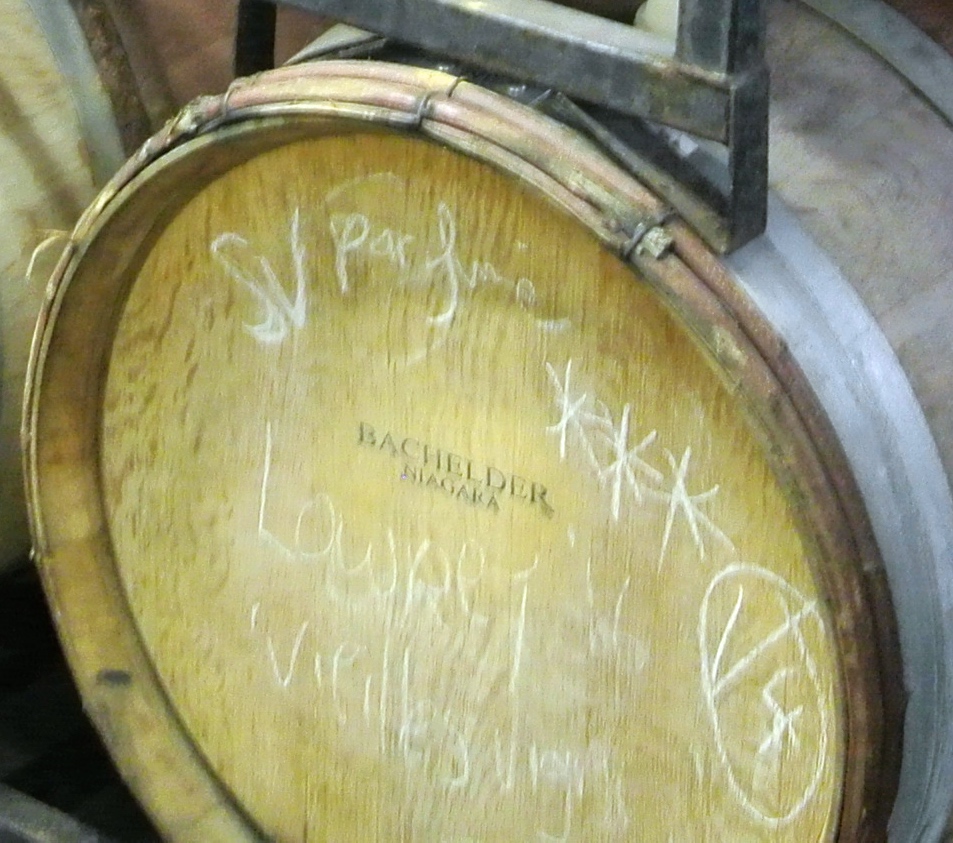
As ambiguous as that word is, it is his hill to die on, whether you subscribe to the notion of minerality or not.
I’m a believer; yes, it does exist and it is most evident in the French oak barrels that crowd his modest cellar on Locust Lane on the Beamsville Bench and the bottles born of those barrels.
Chalk, slate, oyster shells, flint, petrol, salinity, steely, iron, graphite, sandalwood, river rock, perfume, sea breeze … insert your descriptor here (there are many). All that is not fruit, and all that is not barrel-tinged spice, and all that is not a yeast derivative or umami is squeezed from the soil where it is grown. It is the essence of the vineyard, forged millions of years ago by Ice Age glacier retreat and the mineral deposits left in its wake, and defined by the soil from which the vines draw life — this is minerality. It’s a thing. But you have to be a believer.
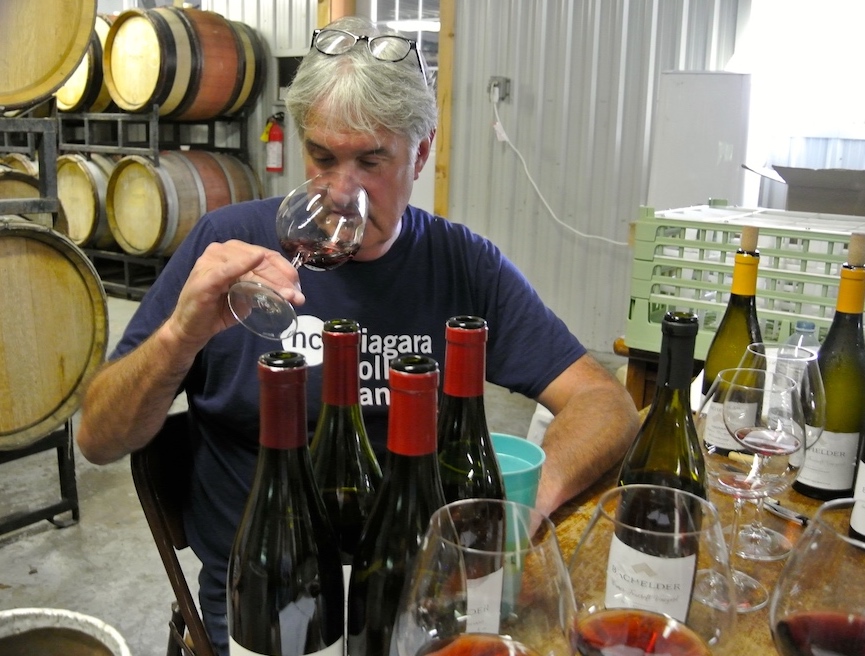
Bachelder is a believer. And when it comes time to define it, he is a savant, jotting down descriptors with chalk on barrelheads as he endlessly, meticulously tastes from his precious lots and re-evaluates over and over again.
We start our tasting with his Pinots from three terroirs then we move on to the barrels where he separates his parcels as specifically as he can. We are speed tasting from four barrels of Lowrey Vineyard — drawing wine from the vessels, swirling, tasting, describing and spitting. We quickly move on to the next in a lively game of musical barrels. If a thought occurs to Bachelder while tasting he will write in on the barrelhead.
For the Lowrey Vineyard Pinots, he keeps his coveted lots divided by vine age, from the oldest vines to youngest. Is there a single-vineyard, single-lot, single-row wine among the four barrels he gets from Lowrey every year?
So far, because he does not have a retail store and bottles a single-vineyard Lowrey with the best of the best fruit from three different plantings with the rest going into his “village” Pinot, it hasn’t been practical. His vision for the future is far different than what he’s doing now, working from a manufacturing licence that doesn’t allow a retail facility or means to sell directly to consumers (only to liquor boards and restaurants). He is at the mercy of those government-controlled liquor boards and if they don’t get the significance of drilling down for the best expression of a vineyard, they won’t sell it. Then what?
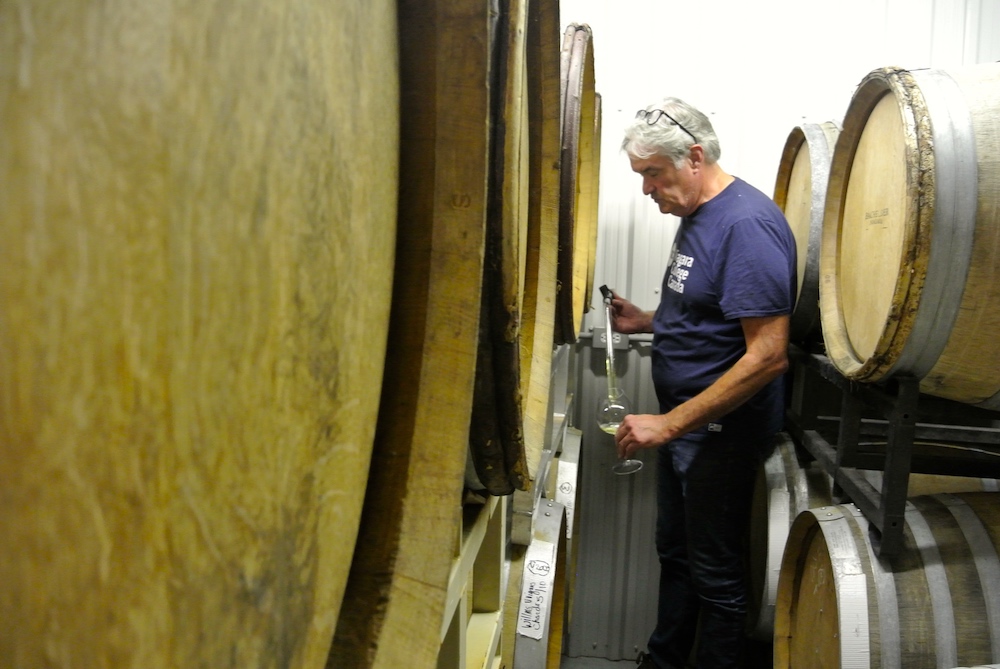
I can see the beauty in bottling a wine from just the rows he gets of the original five of the Lowrey vineyard made famous by the Alliance Pinot project spearheaded by the late Karl Kaiser. From barrel, it blows my mind; such beauty and complexity, it has that ‘OMG’ quality that is so rare even with top Burgundian Pinots. It is an outlier compared to the other three barrels. Simply stunning. The aromas are one thing, but that first sip slams your senses with pretty and layered fruit, minerality, and depth that you can’t stop tasting. It’s a game changer. And that’s not taking anything away from the blend he will eventually bottle from the three plantings he draws his fruit from.
I see the potential in that one barrel, like the potential that I once saw in the Les Clos Jordanne project that was discontinued by Arterra (the most perplexing decision ever to end such a beautiful Pinot project in Niagara, by the way, what were they thinking and why hasn’t someone there resurrected it from the vineyards they mostly still own?).
Still, Bachelder is one of an exclusive list of winemakers making exquisite Pinots and Chardonnays from specific terroirs not only in Niagara, but Canada.

He sources his fruit wisely from key vineyards in key terroirs: Wismer-Wingfield, Wismer-Parke and Wismer-Foxcroft (Twenty Mile Bench), Saunders-Haut (Beamsville Bench) and Lowrey Vineyard (St. David’s Bench) spread over three varietals — Pinot Noir, Chardonnay and new to the portfolio, Gamay.
(Bachelder does all this while also crafting wine from both Burgundy and Oregon, by the way. So, yeah, he’s a little bit busy).
Tasting Bachelder’s wines, on this day joined by his wonderful partner and wife Mary Delaney, with him is an enthralling experience. He commands your full attention whether you have a mouthful of wine or not. Bachelder is several steps ahead you, jockeying wines around as you are in mid-sip depending on how he feels the wine is performing. It’s hard work keeping up and even harder keeping everything straight if you’re taking notes.
Bachelder’s world is a chaotic one, but the end game is such a beautiful thing.
He does it by sourcing the best fruit that suits his style, which is minimalist winemaking, rarely more than 25% new French oak, attention to detail in both the vineyard and the winery and, in the end, letting the wine express itself rather than letting the wine be defined by the winemaking (which is easier said than done).
Or as Bachelder says:
“We make wines from local terroirs using ‘wild’ (indigenous) yeasts, using organic vineyards wherever possible. Everything goes to barrel for long ageing ‘élévage,’ but the intent is not wines that taste of oak, but pure, unfettered wines that sing lightly and clearly of their vineyard origins with as little ‘makeup’ as possible — wines that are finely perfumed and tightly-wound, offering the classic refined fruit and textured minerality of the best terroirs.”

Here’s what I liked from a tasting recently with Bachelder.
The Pinot Noirs
Bachelder Parfum Pinot Noir Niagara 2016 ($25 licensee only, 91 points) — This is a Pinot made for restaurants only and is a village-style blend of Wismer, Lowrey and Saunders. What a gorgeous nose of savoury cherry, sandalwood, beetroot, raspberry bramble and subtle oak spice notes. It shows layers of pleasure on the palate with persistent red fruits that have a savoury/earthy feel through a long, spicy finish.
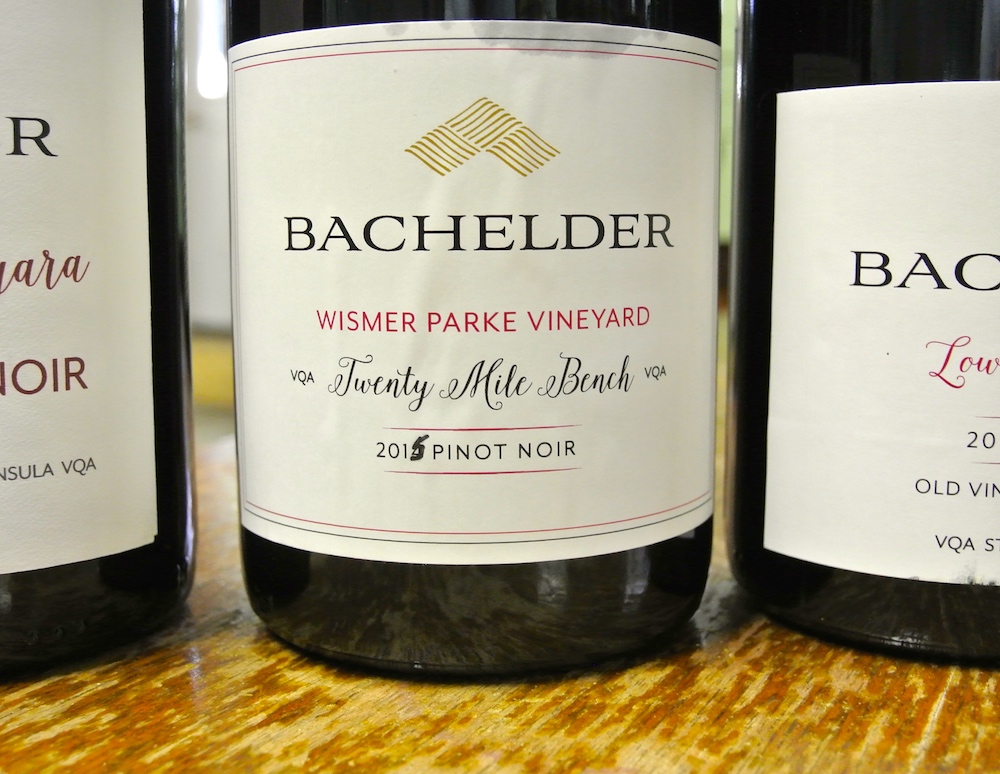
Bachelder Wismer-Parke Vineyard Pinot Noir 2015 ($45, Vintages Classic Collection in October, 93 points) — This is the second vintage of Wismer-Parke, from a vineyard south of Highway 8 and on the eastside of Victoria on the Twenty Mile Bench. If you ask Bachelder, he would argue that this vineyard is as close as it gets to “grand cru” in the region. This version is pretty and delicate on the nose with aromas of cherries, crunchy raspberries, violets and perfume that leads to iron/slate minerality with soft oak spice notes. It’s focused on the palate with lovely tart cherry, bramble and savoury raspberry fruit and spice all delivered on a velvety smooth bed of tannins through a long finish. Good potential for the cellar.
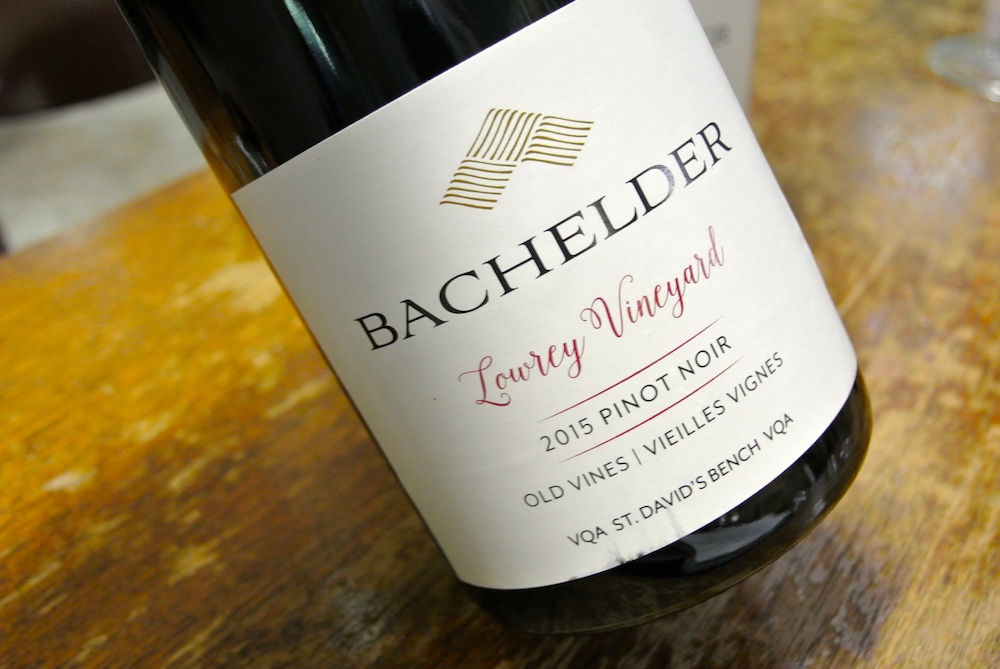
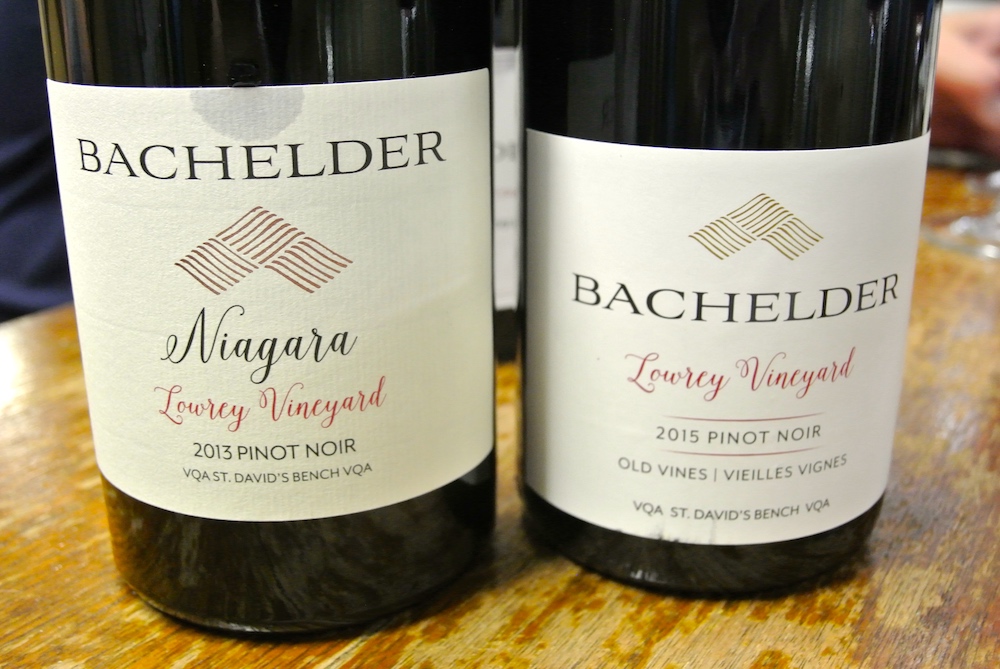
Bachelder Lowrey Vineyard Pinot Noir 2015 ($45, at flagship Vintages stores Saturday, 93 points) — Always a beautiful wine from the sublime terroir of the Lowrey family farm on the St. David’s Bench. A nose that sings with heavenly scented perfume, forest floor, dark cherries, cassis, wild raspberries, toasted vanilla spice and complex mineral notes. It has such depth and structure on the palate to go with heady, persistent red berries, wet loam, fine tight-grained tannins, integrated spice notes and length for miles and miles. This has the potential to improve in bottle for 7+ years. She’s a beauty. We also had a second look at the 2013 version of the Lowrey Vineyard Pinot Noir, and even the ’13 can benefit from further aging in the bottle. It shows firmer tannins, but still the beautiful red fruits, minerals and structure of the ’15. It’s coming along nicely.
The Gamay
Bachelder Wismer-Foxcroft Vineyard Gamay Noir 2016 ($27, 89 points) — This is Bachelder’s first Gamay Noir and, of course, it’s a single-vineyard Gamay that was destemmed and spent 8 months in neutral French oak barrels. The nose rocks with overt plums, juicy red fruits, earth and light spice notes. It’s highly gulpable on the palate with a range of succulent and juicy fruits, savoury notes and a touch of spice.
The Chardonnays
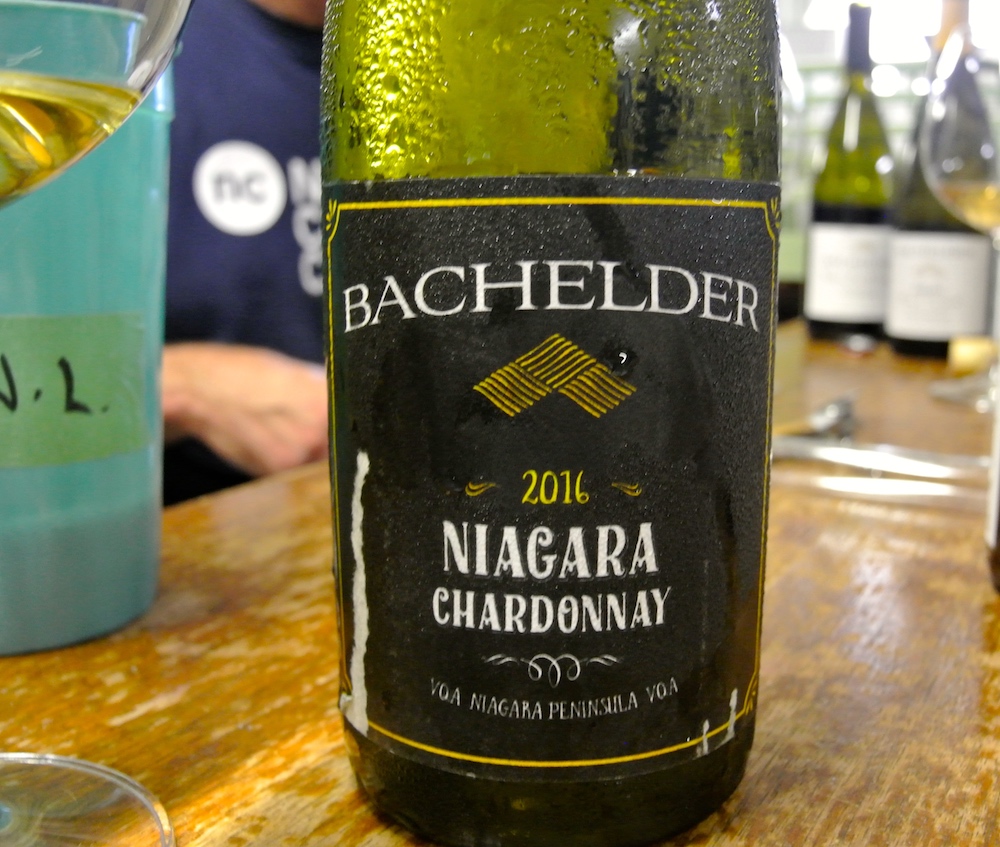
Bachelder Niagara Chardonnay 2016 ($25, 90 points) — This three-vineyard blend of Bachelder’s main sources of grapes is a gorgeous Chardonnay for the money. The nose shows apple blossoms, pear, minerals and light spice notes. It’s pretty and balanced with fresh orchard fruits and flinty minerality all balanced nicely by firm acidity.
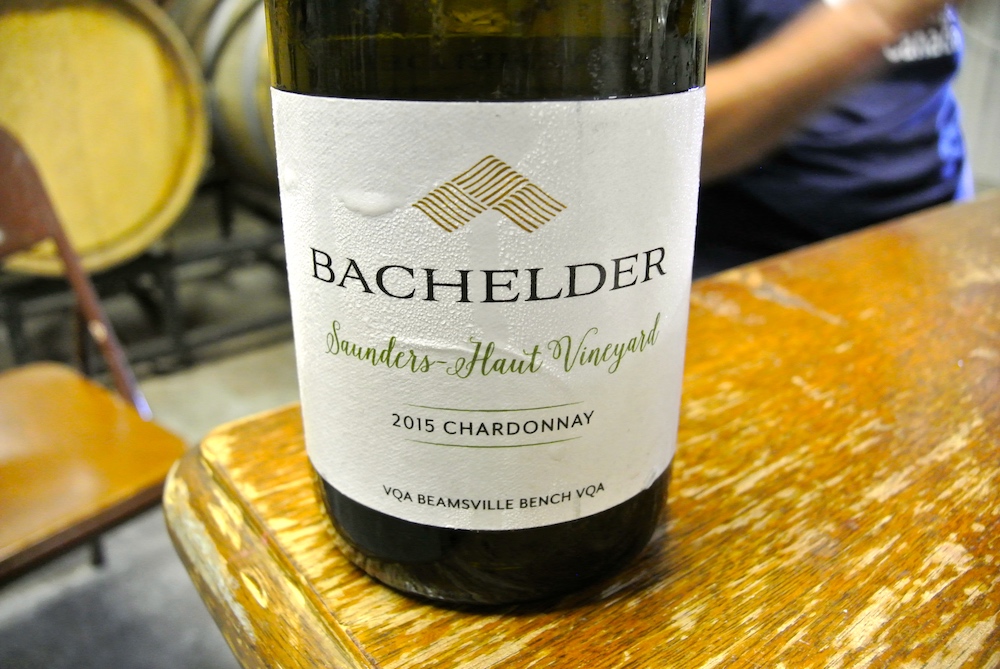
Bachelder Saunders-Haut Vineyard Chardonnay 2015 ($45, at flagship Vintages stores on Saturday, 93 points) — The Saunders-Haut vineyard is pure Beamsville Bench terroir with vines just below Thirty Bench winery on Mountainview Road. This is a beautifully nuanced, heavily mineralized Chardonnay with waves of pear, citrus, honeysuckle, integrated oak spice notes and wonderful defining slate and chalk accents. Such tangible minerality on the palate, turning to flint and chalk and integrated with the pear/apple/citrus fruit that is all kept fresh by the racy and mouth-watering acidity.
Bachelder Wismer-Foxcroft Vineyard Chardonnay 2015 ($45, 92 points) — The Wismer-Foxcroft Chards have a pretty consistent profile. It’s a late bloomer out of the gate with a taut profile on both the nose and palate. Hang on though, because it will develop into something wonderful. The ’15 shows the beauty of the vineyard if you give it time — apple skin, salinity, pear and subtle spice notes on the nose. On the palate it is more revealing with quince flavours, vanilla cream, river-rock minerality, lovely integration, length and finesse on the finish. Buy and hold 3+ years.
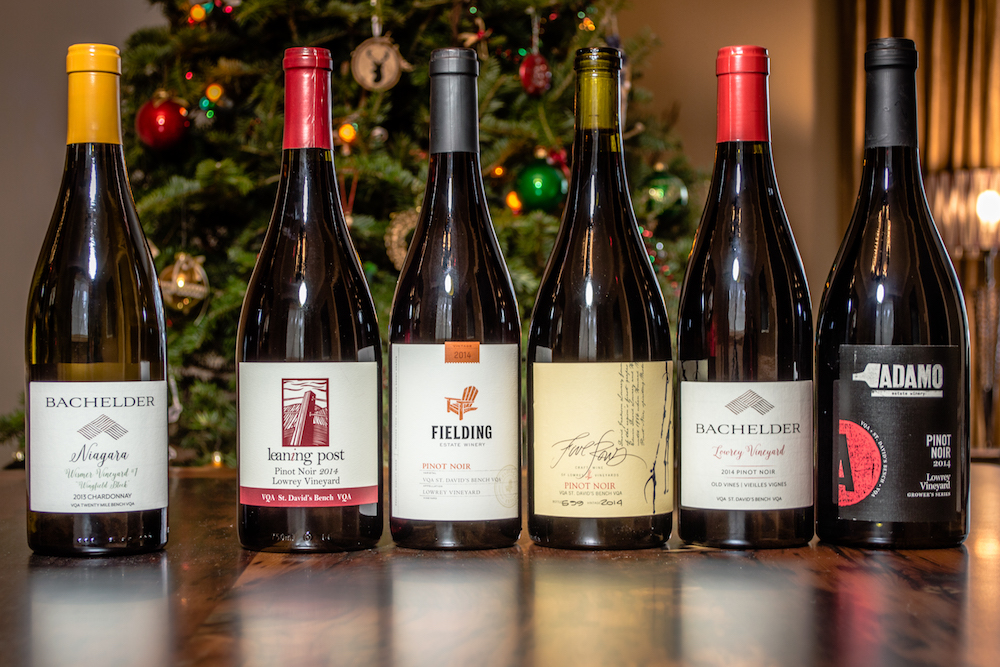
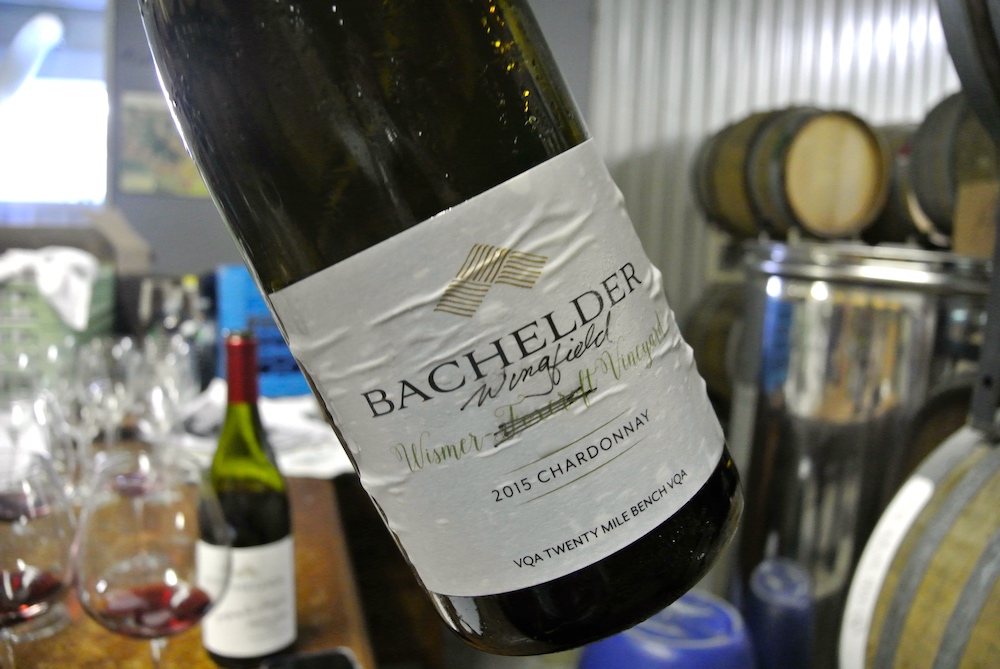
Bachelder Wismer-Wingfield 2015 Chardonnay ($45,Vintages Classic Collection in October, 94 points) — The 2013 vintage of this Chardonnay from the Wingfield Block in the giant-sized Wismer Vineyard on the Twenty Mile Bench was Wines In Niagara’s Most Thrilling White Wine of 2017 (the Bachelder 2014 Lowrey Pinot Noir shared the top Red Wine of Year with the four other Pinots made from Lowrey fruit in that vintage, as well). So, there’s something about this wine that consistently rises to the top in my notes. It is subtle to begin, with flinty, saline minerality starting the attack on the nose. The apple and pear begin to emerge with citrus in behind. It is tight and fresh with fine oak spice that slowly emerges. It is such a pretty wine, a seductive wine on the palate with soft orchard fruits, a touch of acacia honey, fresh lemon, layers of flint, pebbly/river rock minerality and such beautifully integrated oak spice that never gets in the way of the fruit. It is layered and textured and dances delicately on the tongue and leads to a long, long finish. Simply gorgeous wine once again.
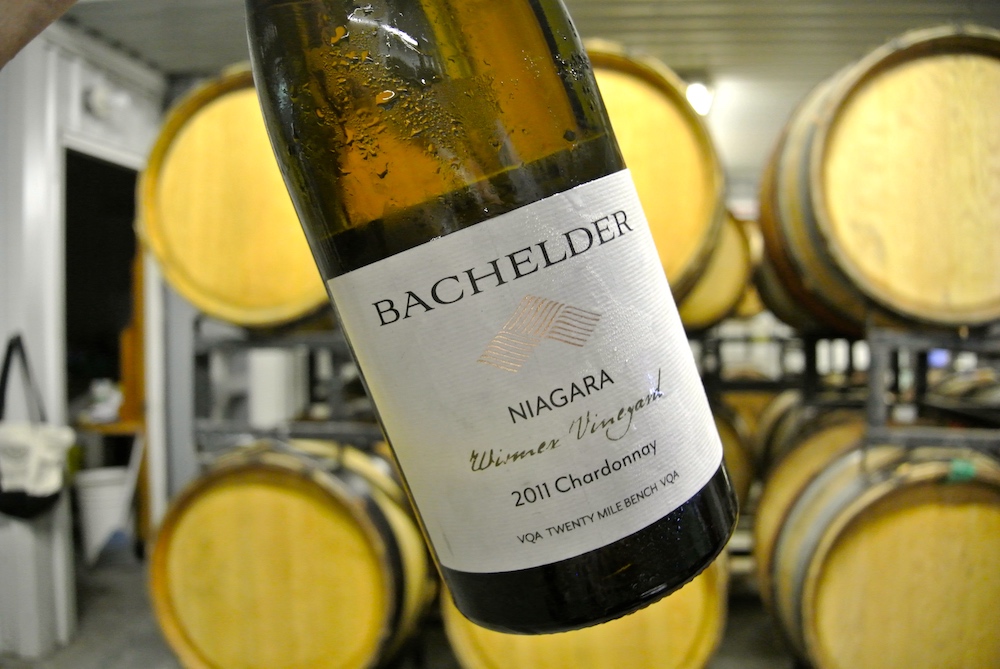
Our last taste in bottle (there was a riot of upcoming Chardonnays tasted from barrel) was the Wismer-Wingfield Chardonnay 2011, one of only four Bachelder had left. It only confirmed everything I have written about Bachelder in the past — beautiful wines that just get better with a bit of time in the bottle. The ’11 turns up the flinty/oyster shell minerality, integrates the oak and fruit, keeps the finesse on the finish and languishes on the palate minutes after sipping. It is what Chardonnay from a limestone-based terroir is all about.





Looks like a trip to a Flagship vintages might be in order.
Too bad Thomas can’t sell his wines with the ones he makes with Domaine Queylus. I am sure they would compliment their fine wines, and allow the public a chance to taste them.
Glad we can finally get a selection from the SAQ. Till now, I’ve had to drive the 90 Kms to Cornwall. But I still have a couple of btls left of his 2011 Niagara Chardonnay. Surprised that I can’t find any Gamay Noir in Ont, but can in Québec. So its off to Valleyfield tomorrow for some.
gc